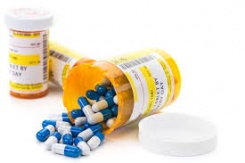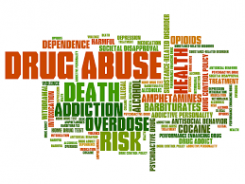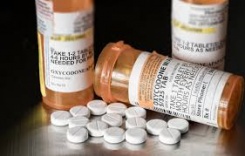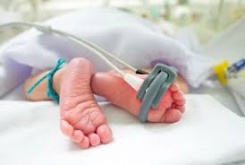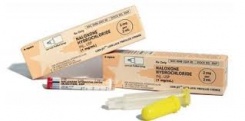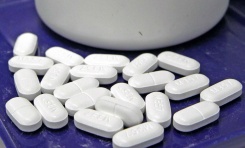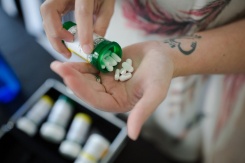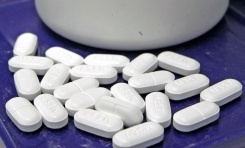Opioid Treatment Program Helps Keep Families Together
LISA GILLESPIE
April 23, 2018
It works like this in Kentucky: Someone reports a parent to Child Protective Services if they suspect the adult has an addiction problem and children aren't being taken care of. If there's evidence to support the claim, the parent then has a choice — they can go through the standard CPS process, or enroll in START.
Faces of an Epidemic
Margaret Talbot
March 27, 2018
This week, President Trump plans to declare the opioid epidemic a national emergency. It's a welcome, but belated, response to a problem that has been growing inexorably for nearly two decades. For all the coverage the opioid epidemic has received, the reaction to it has been inconsistently muted.
Read more here:https://www.newyorker.com/magazine/2017/10/30/faces-of-an-epidemic
Legislation to Fight Opioid-Related Infectious Diseases Introduced by Sen. Todd Young
Hoosier Ag Today
March 27, 2018
U.S. Senators Todd Young (R-Ind.), Edward J. Markey (D-Mass.), and Tammy Baldwin (D-Wis.) introduced the Eliminating Opioid-Related Infectious Diseases Act of 2018, S.2579, to address increased rates of infectious diseases caused by substance use disorders. This legislation would authorize the Centers for Disease Control and Prevention (CDC) to expand the scope of an existing CDC initiative to focus on eliminating infectious diseases caused by injection drug use.
A baby is born with opioid withdrawal every 15 minutes, costing America $2.5 bn since 2004 - and rates are rising, research reveals
Natalie Rahhal
March 27, 2018
The number of babies who were exposed to opioids in the womb rose by more than five-fold in the last four years, according to a new analysis of Medicaid data.
More than 80 percent of all of those children were covered by the government-subsidized health insurer, meaning that the US government bears the brunt of costs for neonatal abstinence syndrome.
Does Naloxone Availability Increase Opioid Abuse? The Case For Skepticism
Richard G. Frank Keith Humphreys Harold A. Pollack
March 22, 2018
Seeing an unconscious opioid overdose victim being revived from the brink of death by the application of naloxone has a miraculous quality. Tens of thousands of people are now being revived with naloxone every year. Yet, a recent paper by Jennifer L. Doleac and Anita Mukherjee challenges the idea that expanding the availability of naloxone will produce positive net benefits to society. We are concerned that fundamental limitations in that research produce misleading results, which if acted upon could produce real harm in the form of loss of life.
In N.H., Trump pledges to ‘get tough’ on drug crime, unveils opioid epidemic plan
John Wagner and Katie Zezima
March 22, 2018
HHS chief pitches new measures to expand opioid addiction treatment
RACHEL ROUBEIN
March 2, 2018
Additional Guidance Would Help States Better Implement Protections for Children
U.S. Government Accountability Office
March 2, 2018
All states reported adopting, to varying degrees, policies and procedures regarding health care providers notifying child protective services (CPS) about infants affected by opioids or other substances. Under the Child Abuse Prevention and Treatment Act (CAPTA), as amended, governors are required to provide assurances that the states have laws or programs that include policies and procedures to address the needs of infants affected by prenatal substance use. This is to include health care providers notifying CPS of substance-affected infants.
1 in 14 pregnant women still smoke, despite known risks, CDC study reports
Ashley May
March 2, 2018
Smoking while pregnant is linked to a host of birth defects, but one in 14 women are still doing it, according to a Centers for Disease Control and Prevention report released Wednesday.
More than 7% of women who gave birth reported smoking while pregnant in 2016, according to the report by the CDC's National Center for Health Statistics.
Controlling the Swing of the Opioid Pendulum
George Comerci, M.D., Joanna Katzman, M.D., M.S.P.H., and Daniel Duhigg, D.O., M.B.A.
February 23, 2018
Well before the opioid crisis was recognized and attention was directed to opioid-related deaths, clinicians cited issues related to opioids as a principal reason why they didn’t enjoy caring for patients with chronic pain.1 Now, many physicians and advanced care practitioners (nurse practitioners and physician assistants) have decided that the risk associated with prescribing opioids is too high. Some clinics, particularly in locations with high rates of opioid misuse, have established policies of not prescribing opioids at all.

